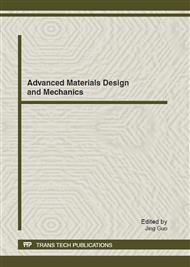p.525
p.529
p.533
p.539
p.546
p.552
p.556
p.560
p.564
Finite Element Model and Analysis of Mandibular Incisors' Orthodontics
Abstract:
This paper uses finite element method (FEM) to simulate the stress distribution and the displacements during the orthodontic process of the mandibular lateral incisor. It provides theoretical guidance for the design of the orthodontic treatment. This study is as follows: (1) Use the software of MIMICS to reconstruct models of the mandible and the dentition by CT scanning images. (2) Use the software of Pro/Engineer (Pro/e) to simplify the model built in Mimics, establish the model of the orthodontic brackets, and assemble the mandible, the dentition and the brackets together. (3) Simulate the process of orthodontic surgery, use the software of ANSYS to study the effect of orthodontic surgery by changing the direction in which external force is applied, and reveal the regularity of displacements and stress distribution of the mandibular lateral incisor caused by local displacements.
Info:
Periodical:
Pages:
546-551
Citation:
Online since:
September 2012
Authors:
Keywords:
Price:
Сopyright:
© 2012 Trans Tech Publications Ltd. All Rights Reserved
Share:
Citation:


